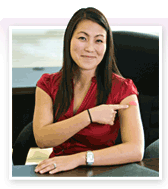Wednesday, February 23, 2011
Utah's Air Quality and Health
By: Becca Jorgensen, Utah Asthma Program
The Asthma Program established an air quality coordination workgroup with the Utah Department of Environmental Quality (DEQ) with the purpose of streamlining/clarifying air quality messages to the public.
We knew something had to be done to address all the confusing messages about air quality so we decided that a set of tutorials to explain how to use DEQ's air quality web sites, the recess guidance, and how to track symptoms/pollution level to determine outdoor activity level would be developed. Thanks to the "mega" media contract in the Bureau, we were able to work with Love Communications to develop the tutorials.
The tutorials can be seen on the Utah Asthma Program website http://health.utah.gov/asthma/.
We also integrated with the UDOH Environmental Epidemiology Program, DEQ, and The National Weather Service to conduct an analysis of Inversions, PM2.5 and Asthma Emergency Department visits. Findings from the analysis show:
- On average, PM2.5 reaches levels that are unhealthy for sensitive groups during inversions lasting 3-4 days or longer.
- No association between ED visits for asthma and PM2.5, including up to 3 days after exposure.
- Odds of primary ED visit for asthma are 42% higher during days 5-7 of a prolonged inversion, compared to a non-inversion day.
Integrating with DEQ and Environmental Epidemiology has benefited the Asthma Program tremendously! Not only have we been able to extended our reach across the state, but these partnerships and collaboration shave greatly improved the quality of our work. We will continue to integrate with them!
Monday, November 15, 2010
Let's get social!
The Utah Cancer Control Program (UCCP), Tobacco Prevention and Control Program (TPCP), Healthy Utah, and Diabetes Prevention and Control Program (DPCP) integrated to present the value of using Social Networks as a medium for health promotion. They co-presented at the Utah Council for Worksite Health Promotion conference in October. During the panel discussion each program shared their experience with utilizing social networks and answered attendee questions.
Whitney Johnson shared UCCP’s success with utilizing blogs to promote Cervical Cancer Prevention and encourage individuals to share their stories by creating a posting on their personal blog and/or Twitter account and entering it into the UCCP’s Cervical Cancer Prevention Contest.
Kelli Bradshaw shared Healthy Utah’s use of Facebook and Twitter to reach members, promote the program events, send health related information, and encourage discussion. Facebook has been a great avenue to connect with Healthy Utah members throughout the state.
David Neville shared the TPCP's success with their “Text2Quit” campaign which utilized text messaging to send daily tips to help get Utahns through the quitting process. For the TPCP, texting was a great resource to support smoking cessation in a convenient way that took into account people’s busy lives.
Grant Sunada shared DPCP's use of Twitter to not only distribute information but also as a tool to stay connected and see what people are saying regarding diabetes. The program has also utilized this as an opportunity to connect people to available resources.
Monday, August 16, 2010
Integration Highlight: Partnership Pays Off
 The Baby Your Baby (BYB) Program began work with the Utah Indian Health Advisory Board (UIHAB) beginning in 1997, when it was noted that the American Indian/Alaskan Native population had low rates of adequate prenatal care. Several ideas were presented to the board for consideration with the concept of adapting the Baby Your Baby Health Keepsake for the American Indian/Alaskan native population.
The Baby Your Baby (BYB) Program began work with the Utah Indian Health Advisory Board (UIHAB) beginning in 1997, when it was noted that the American Indian/Alaskan Native population had low rates of adequate prenatal care. Several ideas were presented to the board for consideration with the concept of adapting the Baby Your Baby Health Keepsake for the American Indian/Alaskan native population.Although the BYB Program
Monday, August 9, 2010
Integration Highlight: Getting to the Butt of the Problem
Whitney Johnson discussed the UCCP's colorectal cancer screening program. They recruited the daughter of well-known Utah outdoorsman Doug Miller to tell the tale of how colon cancer is preventable. Everybody over the age of 50 should be screened for colon cancer. She shared focus group data that helped them identify barriers to colorectal screenings, then utilized that data to fine tune their advertisements resulting in a steady increase in colorectal screenings above the national average.

Monday, August 2, 2010
Learning together about integration! BHP BOOK GROUP! 8/30/10, 12:00 pm, Room 128
Leading Change: Why Transformation Efforts Fail
John P. Kotter
Please join us for an in-person discussion of this article on:
August 30, 2010
12:00 – 1:00 pm (feel free to bring your lunch)
CHB, Room 128
Consider these initial questions for discussion:
1. How do the concepts in this article apply to your individual work?
2. How do the concepts in this article apply to the concept of Program Integration?
3. Regarding Program Integration, what errors have we made? Where are we doing well?
4. How do we avoid making the noted errors in the future?
Feel free to add your own discussion questions for consideration using the “comments” feature.

